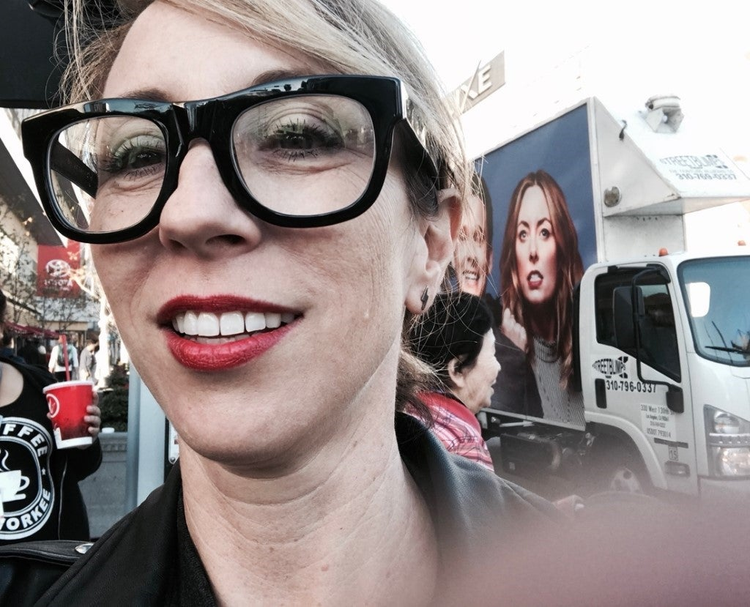5 Questions with Sarah Casillas, Adobe Stock’s new head of content
Adobe Stock new Head of Content, Sarah Casillas, has over a decade in stock photography and has devoted her discerning eye to expanding the authenticity of imagery.

Image Source: Adobe Stock / Summer Candy.
Adobe Stock has a new head of content, but you might know her already: Sarah Casillas, recently promoted from creative director, has been overseeing the Adobe Stock Creative Department for over a year, and evangelizing a fresh, focused vision for the stock industry for much longer than that.
For over a decade, she has devoted her discerning eye and business acumen to expanding the diversity and authenticity of imagery available in stock, while helping creative professionals succeed.
In her new role as head of content, Casillas will expand on that vision, defining and upholding the high standards of quality, value, and inclusive representation that make the Adobe Stock collection truly world class.
Get to know Sarah Casillas in this Q&A.

Image of: Sarah Casillas.
1. How has your background in the stock photography world brought you to this role at Adobe Stock?
I’ve spent my entire stock career building commercial collections with strong brands and high performance. Those successes were only possible by simultaneously building strong communities of talented artists and utilizing data from trends and the collection to inform artist insights and content strategy.
As a side hustle, throughout my career I’ve also been a stock photographer, creating a portfolio with a decent passive income. This really helped me to understand things like cost per shoot, time to market, and production strategies. Besides giving me a tremendous amount of respect for stock photographers and what is required to make money in stock, it also informs my strategies around what and how to communicate with artists.
For most of my career I shot at least 4-6 productions a year, while my day-to-day responsibilities varied over the past 20+ years. I’ve spent most of my time on the creative side, responsible for productions across Asia, art directing shoots around the world, building and acquiring collections. For the past 14 years (prior to joining Adobe), I was a co-owner and eventually CEO of Blend Images, a lifestyle collection that had one of the highest returns per download in royalty free stock. Blend was owned by 23 individuals — 22 who were some of the most financially successful stock shooters in the industry — and me. We operated very much like a co-op, creating a commercially successful collection that championed artists and their work, with a focus on diverse and inclusive content.
These life experiences, friendships, and successes throughout my career are a part of my DNA. Having this opportunity to lead Content at Adobe Stock is a dream come true. I intend to leverage my experience and Adobe’s strength as a creative community to provide a place where Adobe Stock artists can thrive — finding success in the full range of ways our artists define “success.”

Image source: Adobe Stock / Diane Villadsen/Stocksy.
2. What has changed most in the stock industry and the world of commercial photography in the last ten years?
So much has changed and continues to evolve. One huge change has been the complete democratization of the photography and video industries. Everyone now has a smartphone. It’s so much easier for anyone to take high quality photos or videos, anywhere, anytime.
That’s had a few consequences. First, the general collective level of quality has gone up a level — the bar has been raised. There’s a generally high expectation of quality visual imagery — everyone now has a photographer’s eye, especially on social media and because of social media.
The widespread visual fluency gained from social media and iPhone photography has also shifted aesthetics and storytelling, driving a need for more experiential narratives and visual authenticity rather than controlled productions. There is a wider, more diverse pool of people who are documenting their lives and making images. We’re seeing a rapidly accelerating need for better representation of everyone in the media, and necessarily, in the stock industry. This need is only going to keep growing.

Image source: Adobe Stock / Giovanna Graf.
3. What’s your top priority as head of content?
Taking a long view, there are three focuses to that answer: Quality, Community, and Representation.
One thing I’m passionate about and we’re working hard to build is a distinct point of view and definition of what makes quality stock content. Quality is such a subjective word, but we lean into different attributes depending on the region, asset type, and client need to achieve a global, world class collection that is differentiated and commercially viable. We apply that point of view to the content on our platform, yes, but also to the entire experience artists have with Adobe Stock.
I think we need to continue to grow our artist community in a way that truly leverages the brand and the wealth of resources at Adobe. A key part of that is expanding artist education and innovating on how we share information with artists to help them succeed: helping them understand what “quality” means and what’s in demand across different clients, asset types, and geographical regions, and creating a place where they can find that information, along with a sense of camaraderie and community.
Finally, as a global creative company we need to make sure that our content is regionally relevant, accurately representing the aesthetic taste and cultural needs of each market.

Image source: Adobe Stock / phanithan jirakanjanasith/EyeEm.
4. Can you share a bit about the creative trends that have you excited this year?
We recently released our Adobe Stock 2021 Creative Trends, and they are so inspiring. We noticed the theme of connection and community coming through strongly — it’s really woven through the trends in a way that I find very powerful and resonant right now.
From the perspective of photographers and videographers, the big trend to note is the shift more clients are making towards stock as a replacement for custom location shoots. This shift was accelerated by the pandemic as safety concerns and shelter-in-place orders made location shoots difficult or even impossible. Shoots were postponed or cancelled, and brands have had to re-think their approach.
Out of this has come a big surge in user-generated content or content with a handheld look taking center stage, as well as great demand for high quality stock content depicting hard-to-get imagery, multi-generational and diverse families, and accurate, current medical environments and healthcare professionals — just to name a few examples.
We recognize that this is a challenging time for creatives. While many of us are still in lockdown and won’t be back to normal until post-COVID-19 vaccinations, we will be increasing artist education to give support on what to shoot with the production limitations necessary to stay safe.

Image source: Adobe Stock / Colin Anderson.
5. What advice do you have for new stock artists?
Shoot what you know. Let your passion and expertise give you a competitive advantage. Think about the resources that you have available to you that others don’t possess and how you can increase your shoots’ competitiveness by 5 percent. This sounds like a small percentage but sometimes that’s all you need to set your work apart. Remember that your image is being viewed at thumbnail size next to many other images.
If the goal is to have a full-time career creating stock images, you must be strategic in your approach. What I mean by that is, if you’re an artist and you want to succeed with stock, take the time to do research. Get an understanding of your target client. What concepts are they looking for? How can you be thoughtful and strategic about the keywords you’re using? Those concepts and keywords are the most effective tools for reaching your audience.
We offer a lot of artist education resources to help artists do all this. Understanding how to title, tag, and keyword your images — how to properly handle model and property releases — and how to design shoots that will capture the most important creative, visual trends clients want — all of this is vital to success creating for stock.
Adobe Stock artists wanted: Sign up to become a Contributor to Adobe Stock.